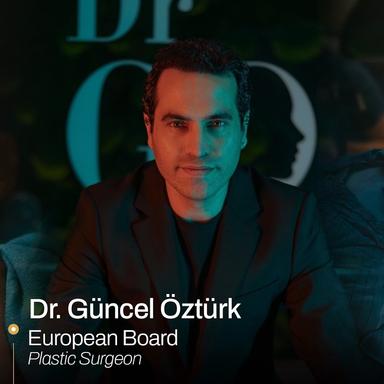Does Hair Transplants Last Forever? What They Don’t Tell You Upfront

Prathyusha Itikarlapalli
- Content Writer

Guncel Ozturk, MD, FEBOPRAS
- Reviewed by

Table of contents
- How Long Do Hair Transplants Last?
- Why Do Hair Transplants Last Forever?
- Why Do Hair Transplants Fall Out Again Shortly?
- Do You Have To Keep Getting Hair Transplants?
- Hair Transplant Before and After: Factors Affecting the Longevity of Results
- Bad vs. Failed Hair Transplant: What's the Difference?
- Why Do Hair Transplants Fail?
- How To Attain Better Results After a Hair Transplant?
- Aftercare Regimen for Effective Hair Transplant Results
Key Takeaways
- Hair transplant surgery can be a lasting solution for pattern baldness in men and women. FUE and DHI are the most popular hair transplant procedures, boasting success rates.
- Healthy hair grafts, picked from the back and sides of the scalp, are resistant to balding. They experience normal aging phenomena, such as greying and hair loss. However, it does not manifest as bald spots, and a hair transplant after 10 years or 20 years appears to be largely the same.
- The longevity of hair transplant results depends not just on the procedure itself but on who performs it and how it’s maintained. A skilled surgeon, a sterile clinical environment, and patient factors such as age, hairstyle goals, and commitment to aftercare all play a crucial role in determining the longevity of the results.
How Long Do Hair Transplants Last?
Many hair transplant clinics promote the idea that results are permanent. While this is largely true, clinical studies indicate that the longevity of results can vary significantly from one patient to another. Even when the procedure is performed correctly, outcomes aren’t always uniform. A study involving 112 patients found noticeable differences in the duration of the results.[1] So, will a hair transplant last forever?
The truth is that transplanted hair is typically permanent, but it behaves like your natural hair. That means it undergoes normal aging processes such as graying or mild thinning over time. However, this gradual thinning is not usually aggressive enough to show up as new bald patches.
Where Do Hair Transplants Come From?
The hair transplant experts pick up healthy hair grafts from the patient's scalp. They mark the non-bald donor areas at the back and sides of the scalp. In rare cases, follicles from the chest and eyebrows are harvested for transplantation. Note that only healthy hair follicles with intact skin tissues are extracted for the transplant procedure.
What Does Hair Transplant Look Like?
A hair transplant procedure is an out-patient procedure performed under local anesthesia. You will be awake during the procedure and will be aware of what is happening around you. The hair transplant specialists harvest viable hair follicles from the donor regions and implant them into the bald areas of the scalp. The donor areas are the back and side portions of the head, specifically the scalp. Depending on the hair transplant method, the harvesting and implantation techniques vary.
The FUT method involves cutting a large strip of the donor region and picking individual follicles. However, more advanced methods, such as FUE and DHI, involve picking individual follicles and implanting them. This leaves minimal scars, has a shorter recovery time, and also has a higher success rate due to lower chances of infection. Having been informed about the scars and recovery time, we also prioritize the safety of the procedure.
Is Hair Transplant Safe?
A hair transplant procedure is generally safe when performed correctly on the right candidate. Typically, the procedure poses no serious health risks, provided a qualified hair transplant specialist performs it. They carry out the procedure while maintaining sterility standards and taking adequate care to prevent graft rejection. Furthermore, it's safe when carried by an appropriate candidate. Individuals suffering from chronic illnesses and healing issues are at risk of developing infections. Getting a hair transplant without proper screening can only compromise both safety and the results.
How Long Does a Hair Transplant Take?
A hair transplant procedure will take anywhere between 4-8 hours. The exact time varies depending on the extent of baldness, the hair transplant technique used, and the surgeon's level of expertise. Generally speaking, the more severe the baldness, the greater the number of grafts that would be needed. This, in turn, would demand more time. Furthermore, methods like FUE and DHI involve harvesting individual grafts, which require more time than the strip method, FUT. Keeping this aside, experienced surgeons perform the procedure effectively while handling potential complications with ease. This also reduces the overall time taken for the procedure.

Why Do Hair Transplants Last Forever?
The transplanted hair last longer than the natural hair on the bald areas. It's because the hair follicles are picked from the sides and back of the patient's scalp. Hair follicles in these areas are typically resistant to pattern balding. When you observe elderly individuals in their advanced stages of balding, a thin hair patch is often left behind on the head, although the most active portion is typically lost from the crown, temples, and vertex.
The donor areas that most hair transplantation specialists consider for the procedure lie at the back of the scalp. These regions are not prone to genetic balding or the effects of dihydrotestosterone. Therefore, the hair follicles harvested from these zones retain their genetic behavior. They grow normally, just as they do in their natural location. However, you should not worry if you lose hair follicles immediately after the transplant procedure. This is a part of the normal healing process. We detailed this in the upcoming section.
Why Do Hair Transplants Fall Out Again Shortly?
Losing transplanted hair follicles a few days or a few months after hair transplantation is a normal phenomenon commonly referred to as shock loss. Some people also experience hair loss around the area where the transplant was performed. This is a completely normal occurrence and happens as the transplants adjust to the recipient's area and also due to surgical trauma. While the transplanted hair falls out, the follicles remain in their place. So they start to grow back after 3-4 months.[2] As a result, hair transplants require at least 12 months for complete results.
Patients need to understand this timeline in order to keep realistic expectations. Saying that the final results would take a few months, you might be confused about repeated procedures. Worry not, as we have elaborated on this in the upcoming section.
Do You Have To Keep Getting Hair Transplants?
The necessity to get multiple hair transplant sessions depends on the severity of balding. While the results of a well-performed session typically last a lifetime, a few candidates may require follow-up sessions after the initial procedure. This can happen especially in cases where the candidate:
- Hasn’t attained the desired density and volume
- Experiences progressive balding even after the initial procedure
- Has gotten a conservative plan for the initial procedure, and only a limited number of grafts were transferred
Note that shock loss does not necessitate multiple hair transplant sittings for any candidate. One will eventually recover and notice improved hair volume and density following shock loss. All you need to do is follow the proper aftercare while you wait for the results.
Hair Transplant Before and After Factors Affecting the Longevity of Results
The success of a hair transplant isn’t just about achieving impressive volume or density. It’s also about how natural the results look and how long they last. While transplanted hair typically grows in a pattern similar to your natural hair, several factors can influence how well those results hold up over time. From the surgeon's skill to your post-operative care and overall health, long-term success depends on more than just the way it's performed.
Clinic and Surgeon
Hair restoration techniques are equally an art and a skill rather than being called solely science. Hence, the longevity of results depends on the surgeon’s expertise and the clinic's standards. Selective harvesting of viable grafts is important. Furthermore, the angle and direction of the implanted grafts also play a significant role.[3] An expert hair transplant specialist can take sufficient care to minimize graft damage. They maintain the graft's integrity during harvest and implant it, considering proper orientation. Injury to hair grafts, whether due to improper handling or accidental transection, can render them unsuitable for continued growth and development.
Furthermore, maintaining sterile conditions prevents infection. Infected grafts due to compromised cleanliness and sterility standards can only lead to graft rejection. It results in scarring of the donor and recipient areas, which lowers your chances of achieving permanent hair transplants. The choice of the clinic actually influences the success of the transplant procedure in this regard. It's because, although hair transplants are popularised as minimally invasive procedures, the role of sterility and cleanliness is no less important. High-end clinics rely on advanced tools and technology. They maintain sterile conditions while ensuring precision and accuracy.
Patient Age
The hair transplant procedure should be performed at an appropriate age for candidates expecting long-lasting results. Individuals under the age of 20 years are not suitable for the procedure. They experience rapid hair loss, and you cannot expect permanent results, as the hair fall may continue. On the other hand, waiting too long for the procedure until around 50 years of age isn’t the right decision either. One requires adequate healthy grafts for a successful hair transplant procedure. Candidates in their early 50s often experience advanced stages of balding, leaving them with scant hair follicles. Planning a hair transplant during this phase may result in a thinner donor area and improper hair growth in the recipient area.
Patient Hairstyle
Candidates should be cautious when choosing a hairstyle to prolong the longevity of their hair transplants. Stressing the hair follicles with tight ponytails or dreadlocks can lead to traction alopecia. The repeated pulling force weakens the follicles, resulting in excessive hair loss. Furthermore, excessive styling can harm the natural environment of the hair follicles. A healthy scalp with improved blood supply can help re-establish follicle re-growth. The harsh chemicals in styling products can cause scalp dryness and inflammation, potentially negatively impacting the lifespan of your hair transplant.
Post-Op Care
Great results don’t just depend on the surgery. It also depends on the way you care. Following a few simple post-operative measures can help maintain a healthy scalp environment. This, in turn, supports the growth of transplanted hair follicles. Keeping your scalp clean and protecting it from infections, harsh chemicals, and harmful UV rays is key. Additionally, adopting a healthy lifestyle provides essential nourishment to the growing follicles, promoting stronger and longer-lasting results. Further, cutting down smoking, alcohol consumption, and high stress will boost the healing process. Delayed healing results in delayed outcomes and, in some cases, poor graft survival. Scalp inflammation and infections can lead to patchy hair loss and poor graft survival, which in turn affects the overall results.
Does the Choice of Hair Transplant Method Affect the Permanence of Results?
No, the choice of hair transplant method does not affect the permanence of the results nowadays. Popular techniques like FUE (Follicular Unit Extraction) and DHI (Direct Hair Implantation) are both based on the same core principle: extracting healthy hair grafts from the donor area and implanting them into the recipient site. While the techniques differ in how the grafts are harvested and implanted, the long-term outcome and durability of the transplanted hair remain largely the same.
The same applies to FUT (Follicular Unit Transplantation), an older method that’s now less commonly used due to the linear scar it leaves behind. Despite cosmetic drawbacks, FUT does not impact the longevity of the transplanted hair either.
Bad Versus Failed Hair Transplant
A bad hair transplant can result in aesthetic issues, including an unnatural hairline, incorrect strand alignment, uneven hair density, and a patchy appearance. Note that a bad hair transplant cannot be confused with a failed hair transplant. While a bad hair transplant may show noticeable hair re-growth, it may not meet your expectations. On the other hand, a failed hair transplant is often associated with excessive shedding, poor growth, infection, and scarring, which are common issues related to hair growth. It results in minimal or no hair re-growth.

Why Do Hair Transplants Fail?
A hair transplant performed correctly on a suitable candidate typically yields successful results, as the success rate of hair transplants is generally high.[4] However, failures in the healthcare field can occur due to identifiable and preventable reasons. While hair transplant side effects, such as pain, discomfort, scabs, itching, and numbness, are quite common, failure may occur in certain conditions, such as:
- Poor surgical methods, whether due to a lack of expertise or inadequate technology, can result in improper graft extraction. It causes accidental trauma, graft transection, or desiccation, making them non-viable.
- Inappropriate candidate screening and performing hair transplants for patients in their advanced balding stages, and those with poor healing abilities and scalp infections.
- Neglected aftercare, where the transplanted hair follicles fail to adjust to the recipient site, or the scalp does not heal properly. Either of which can cause the transplanted follicles to fall off as patches, leaving scars.
Hair transplants don't work when transplanted hair follicles undergo trauma or dry out. A hair transplant failure is a preventable consequence; we shift focus to effective aftercare measures one can adopt to avoid such a failure.
How To Attain Better Results After a Hair Transplant?
Below, we outline the effective strategies you can adopt to achieve improved hair volume and density following a hair transplant.
Minoxidil and Finasteride
Topical applications, such as Minoxidil, act as adjunctive therapy by protecting the hair grafts. It improves blood flow to the scalp and promotes the supply of oxygen and nutrients. This will enhance their growth by strengthening their roots. Additionally, Minoxidil also helps prevent hair loss, particularly in the surrounding donor areas. Therefore, it reduces hair fall and increases its density and volume over time. However, Minoxidil, when applied topically, can cause scalp irritation in a small percentage of patients. It's wise to use it cautiously, following the recommended dosage. Do not hesitate to see your healthcare provider if you notice serious side effects, such as palpitations, headaches, dizziness, or unwanted hair growth. These adverse effects are rare, as Minoxidil is safe and FDA-approved for the treatment of hair loss.[5]
A few recommend combining finasteride with Minoxidil to boost hair growth after hair transplant surgery. Finasteride, in fact, reduces hair fall, enhancing the volume and density. However, it works by reducing the production of dihydrotestosterone hormone (DHT), the primary cause of pattern hair loss. DHT causes follicles to miniaturize and eventually shrink, resulting in their fall off. Finasteride usage is a proven method [6]; however, it is associated with a few side effects such as sexual dysfunction, mood swings.[7] Moreover, oral finasteride is not recommended for women in their childbearing years.[8] It's best to follow the recommendations of your hair transplant specialist. They define a better approach to dealing with hair loss and prescribe an effective strategy to boost the post-hair transplant results.
PRP Therapies
The platelet-rich plasma therapy for hair after transplant surgery is a safe and effective approach, with the least side effects. The platelet-rich plasma is not store-bought and is prepared from the patient's blood. Hair transplant specialists prepare plasma by drawing a small sample of blood and spinning it in a centrifuge to separate the components. The red blood cells separate at the bottom, and the upper plasma layer, rich in platelets, is extracted and injected into the patient's scalp. The cytokines and growth factors present in platelet-enriched plasma stimulate hair re-growth. They achieve this by activating dormant hair follicles, prolonging their active growth phase, and enhancing blood supply to the scalp by promoting the formation of new blood vessels.
Note that your reliance on measures, such as Minoxidil or PRP therapies, does not replace following the predefined aftercare regimen. The aftercare measures nourish the scalp and optimize the microenvironment. These stabilize the immediate environment of the transplanted follicles, protecting them and aiding effective growth.
Exosomes
Exosome therapy is another popular approach to boost hair regrowth following hair transplants. Utilizing exosomes involves extracting mesenchymal stem cells that contain active components, such as mRNA, miRNA, and other signaling molecules and growth factors. The procedure has the fewest complications and enhances hair re-growth by revitalizing the hair follicles.
Aftercare Regimen for Effective Hair Transplant Results
Below, we have briefed on the common post-hair transplant measures one should adopt for effective results.
- Wear the therapeutic headband for smoother healing and to manage swelling.
- Use a neck pillow to sleep with your head elevated during the initial few days.
- Avoid touching your scalp for at least a week, even if it itches.
- Protect your scalp from direct sunlight by wearing a hat.
- Strictly avoid harsh chemicals and opt for mild shampoos and conditioners instead.
- Avoid excessive styling for at least a month after the hair transplant procedure, as heat can damage the growing follicles.
- Choose a healthy diet rich in nutrients, antioxidants, vitamins, proteins, minerals, and micronutrients.
In addition to following these steps, make sure that you attend the scheduled post-hair transplant check-ups without fail. Your hair transplant specialist will closely monitor the progress and promptly address any early signs of complications or infections. This will help you act early on before the conditions worsen.
Final Word!
A hair transplant can offer a lifelong solution to baldness, provided the procedure is done with precision and followed by consistent aftercare. Once healed, the transplanted grafts behave just like your natural hair, growing, shedding, and aging in the same way. While ongoing hair loss in untreated areas may still occur, maintaining a healthy scalp and lifestyle can significantly enhance the longevity and natural appearance of your results. With the right approach, a hair transplant isn't just a fix. It’s a lasting investment in your confidence.
Thinking about a hair transplant abroad? Don’t leave your results to chance. At Envoy Health, we connect you with internationally accredited clinics and expert surgeons who specialize in delivering natural, long-lasting results, all at a fraction of the cost you'd pay back home. Get personalized care, transparent pricing, and comprehensive support from your initial consultation through your return home. Sign up with Envoy Health and take the first step toward hair that stays with you for life.
References
- Longevity Of Hair Follicles After Follicular Unit Transplant Surgery
- Hair Transplantation
- Evaluation Indicators Of Aesthetic Effects On Hair Transplantation
- Hair Transplantation
- Minoxidil: A Comprehensive Review
- Effects Of Finasteride (1 Mg) On Hair Transplant
- Side Effects Of Finasteride
- Finasteride And Its Potential For The Treatment Of Female Pattern Hair Loss: Evidence To Date
Disclaimer
The information in this article is for educational purposes only and does not replace medical advice. Always consult your doctor before starting any treatments.
The density and volume of your hair 20 years after a hair transplant will be more or less the same. While the transplanted hair may experience minor hair loss due to natural aging, the change is not noticeable.
The transplanted follicles eventually fall out after a few days or within a few months after getting a hair transplant procedure. They enter a temporary resting phase called telogen effluvium due to surgical trauma as they adjust to the recipient site. This is known as shock loss and is typically brief. While shock loss is completely normal and a part of the natural healing process, you need not have to worry too much. Simply follow the aftercare routine and watch for positive results.
The duration for which a hair transplant will last varies from patient to patient. Hair grafts are picked from the back and sides of the scalp. They are genetically resistant to balding, and a few may even last for 10 to 20 years, depending on certain factors. Candidates adopting combination treatments (PRP, exosome therapy, or Minoxidil) and those who underwent transplant surgery in the early stages of baldness can expect long-lasting results.
The results of hair transplant after 10 years seem to have had little to no effect. The results achieved after 12 months remain unchanged even after 10 years. The transplanted hair is resistant to balding and experiences normal hair growth, aging, and hair loss. One can expect improved hair growth, enhanced volume, and density when combining adjunct therapies like PRP, exosomes, and Minoxidil.
Hair transplants can be a permanent solution to balding, as they can last a lifetime. All you need to do is find a reputable hair transplant specialist and undergo a thorough screening. Following the procedure, adopt a more effective aftercare regimen for optimal results.
So, we partner with the premier healthcare facilities!
Send me the list

